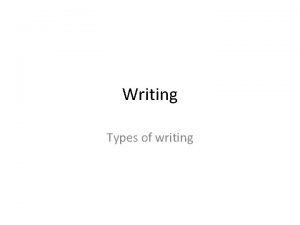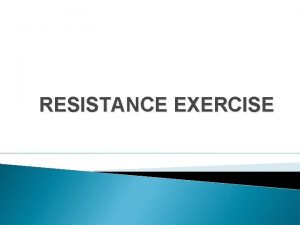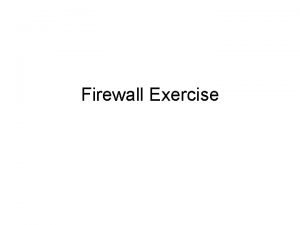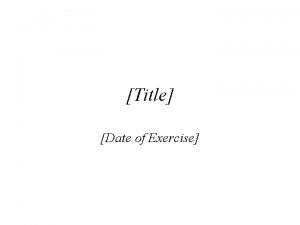WRITING EXERCISE TYPES The main types of writing







- Slides: 7

WRITING – EXERCISE TYPES • The main types of writing exercises are – Copying, copying & re-arranging • Children copy words and phrases by hand (or on the computer, but best by hand) – Dictation • Children listen and write what they hear – Fill-in exercises • Children read and fill in spaces with a word or phrase – Controlled practice • Children follow a model, e. g. letters & postcards – Free writing • (usually as homework) Children write about the topic studied

WRITING FROM A MODEL

WRITING TO PENPALS OR E-PALS • Children love to find out about other children • They can write to children speaking English all over the world • Writing to penpals is a very practical way to use English • It lets children see the real value of learning another language that is to communicate and find out about other people • They learn about other attitudes and ways of doing things. They are not just practicing their English. They are opening their minds to the rest of the world. • If children become aware that English can be used to talk to or to write to people in different countries, they will begin to understand why they are learning this new language.

WRITING FREELY • Give the children as much control as possible over what they are going to write about and how. • Let them write about what they are interested in: their home, parents, interests, hobbies, friends, things that happen at school • Have regular days for checking mail and for emailing so that children can plan and think about what they are going to write

CLIL • Il termine CLIL, introdotto da David Marsh e Anne Maljers nel 1994, è l’acronimo di Content and Language Integrated Learning (Apprendimento integrato di contenuti disciplinari in lingua straniera veicolare) • Il profilo del docente CLIL è caratterizzato dal possesso di 1) competenze linguistico-comunicative nella lingua straniera veicolare di livello C 1 2) competenze metodologico-didattiche acquisite al termine di un corso di perfezionamento universitario del valore di 60 CFU per i docenti in formazione iniziale e di 20 CFU per i docenti in servizio.

CLIL • Questa metodologia si sta diffondendo in maniera capillare in Europa. • La competenza linguistica in lingua straniera è definita una dimensione chiave per la modernizzazione dei sistemi di istruzione europei • la metodologia CLIL è rappresentata come il motore del rinnovamento e del miglioramento dei curricoli scolastici.

CLIL – an overview • CLIL = school subject + foreign language – The aims, procedures and outcomes of the course relate both to the subject and to the language. – CLIL is not new but it is becoming more important. • CLIL involves teaching content which pupils are learning/have learned in other areas of the curriculum – As a result, pupils learn the subjects in the foreign language in addition to the native language.













